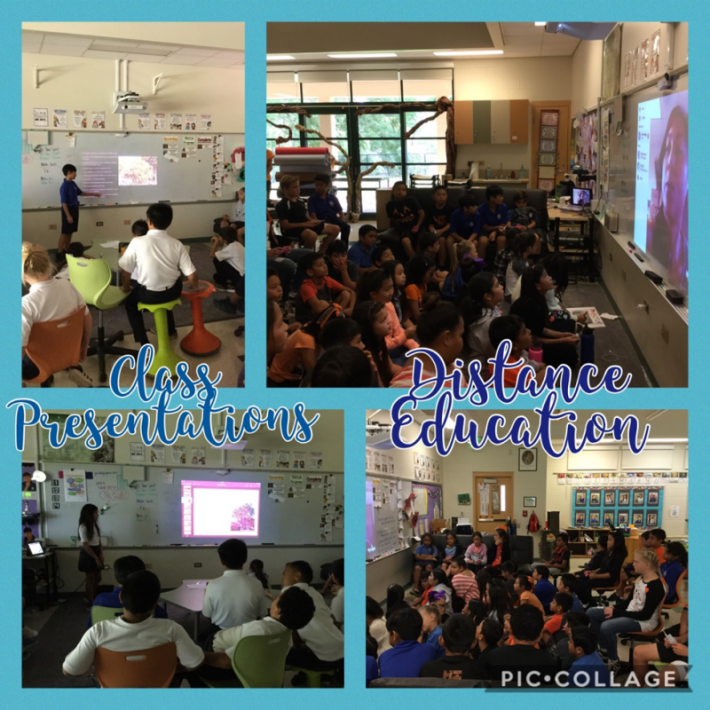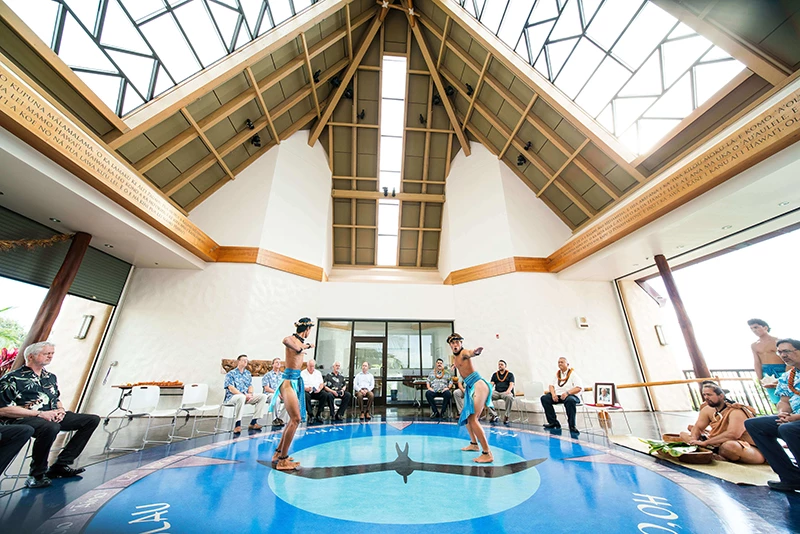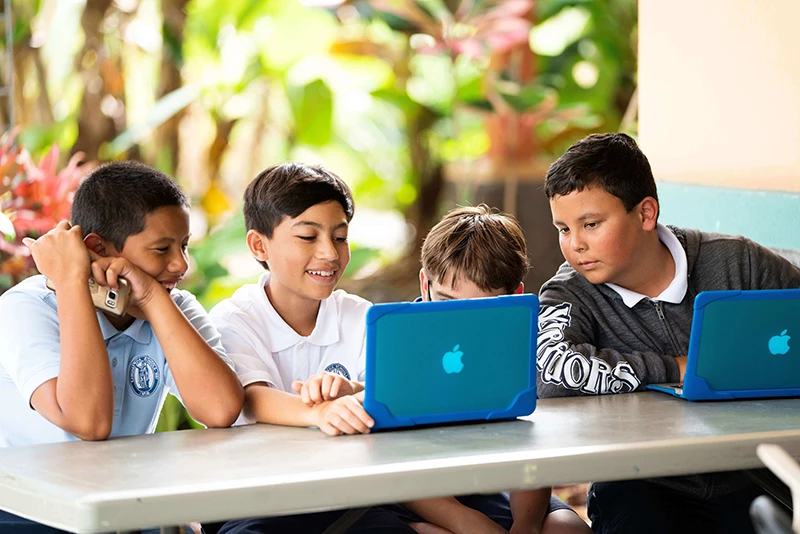Alison, with Maui Invasive Species Committee, gave an informational hands-on presentation that helped the students understand the watershed and how it can be affected by the introduction of people, plants and animals. The students used picture cards (native animals & plants), sponges (invasives), clay (our mountains) and water to help them identify the movement of water within a watershed. As the students went through the presentation they asked questions like: why would we build a parking lot, how can we take out the sponges (invasives), and how come we don’t have companies protecting our watersheds? The spark was ignited and soon the students began to deepen their connection to why saving our ʻōhia lehua from Rapid ʻŌhia Death is so important.
Corie Yanger, Rapid ʻŌhiʻa Death (ROD) Educational/ Outreach Specialist from the University of Hawaii—Hilo, took time out of her busy schedule to educate our haumana about the ROD infestation on the Big Island of Hawaii. The students came prepared with questions they generated from their reading materials created by Yanger and her colleagues. As the students asked their questions, Yanger was able to answer them as well as show them different pictures and wood samples of ROD in the ʻŌhia. The students were able to take the new information and apply it to their ongoing ʻŌhia research.
As a part of our Hawaiian Thematic Unit, the students have to take what they’ve learned and share it with their classmates during an oral presentation. Oral presentations help the students with oral communication, which is a fundamental skill to the development of literacy and essential for thinking and learning. The student were nervous and unsure about presenting to their classmates but were pleasantly surprised by the wealth of knowledge they posses.
Plants have many different characteristics that make them unique. We were fortunate enough to have some ʻŌhia lehua plants donated to our classroom so we could incorporate a hands-on learning experience. During plants observations, the students were asked to record data about their plant using photos, words, and measurement. These observations will be dated and categorized by plant number so that during the next observation the students could compare and contrast each plant. The students thoroughly enjoyed being outdoors and interacting with the ʻŌhia plants as they danced in the wind.
Submitted by: Kumu Lindsey Texeira, Grade 4 Kumu


TAGS
CATEGORIES
Kaipuolono Article, Maui Newsroom, Maui Elementary School, Maui campus
Print with photos
Print text only










